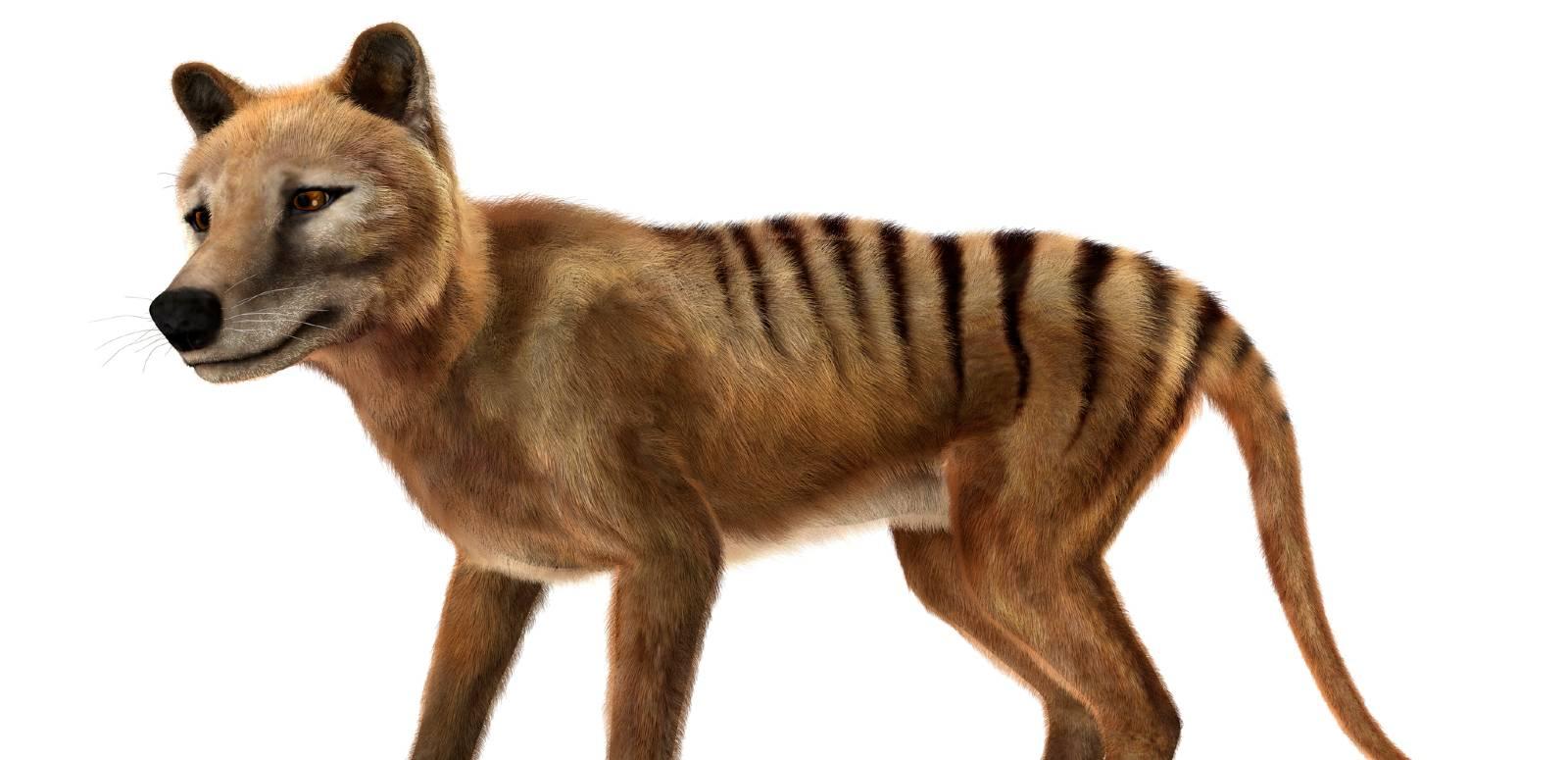Released by the NFSA, a digitally preserved travelogue reveals the last-known surviving moving images of the extinct thylacine. The vision was rediscovered, dated and identified by the Tasmanian Tiger Archives team.


Released by the NFSA, a digitally preserved travelogue reveals the last-known surviving moving images of the extinct thylacine. The vision was rediscovered, dated and identified by the Tasmanian Tiger Archives team.
Fewer than a dozen source films, amounting to little more than three minutes of silent, black-and-white footage, of the elusive thylacine (Tasmanian Tiger) are known to survive.
All derive from thylacines held in captivity and photographed in only two locations – Beaumaris Zoo in Hobart and London Zoo. Now, unseen publicly for 85 years, a further precious 21 seconds is being released by the NFSA.
These images had not been seen by the public in decades, until they were rediscovered and brought to our attention by researchers Branden Holmes, Gareth Linnard and Mike Williams, from the Tasmanian Tiger Archives. They located the vision within a forgotten travelogue, Tasmania the Wonderland (1935).
This recently digitised 4K clip represents the preservation of the last-known surviving moving images of Australia’s most famous extinct predator:
The last known footage of a thylacine (Tasmanian Tiger), from Tasmania the Wonderland, 1935. NFSA title: 55567
In the clip above, we see the last captive thylacine at the long-defunct Beaumaris Zoo, calmly pacing the enclosure. Zookeeper Arthur Reid and an associate rattle his cage at the far right of frame, attempting to cajole some action or perhaps elicit one of the marsupial’s famous threat-yawns.
The film’s (unknown) narrator makes mention of the animal’s rarity, and indeed, this is the only professionally produced sound film screened to audiences while a specimen was still alive in captivity.
Tasmania the Wonderland was probably filmed by the prolific Brisbane-based filmmaker and exhibitor Sidney Cook (1873–1937). The surviving nine-minute travelogue is incomplete and retains no end credits.
A confirmed 1935 year of filming positions this film more than 12 months after the previous last-confirmed date of thylacine footage, photographed in December 1933. Within the travelogue, the presence of the annual Regatta Day on the Derwent River (6 February) and goods steamer Tacoma Star, which docked in Hobart on 22 March 1935, provides an approximate period for when Cook’s camera paid the thylacine a visit.
Only 18 months after this film was taken, the last-known confirmed surviving thylacine in captivity passed away on 7 September 1936.

During his filmmaking visit to Tasmania in the early months of 1935, Cook obtained assistance from the Tasmanian Government to produce a ‘talkie travelogue’ that he planned to screen on the mainland through his network of cinema contacts.
Arriving in Hobart on 17 January 1935, Cook’s trip took him around the island over the next three months, filming in many locations including Hobart, Launceston, parts of the west coast, Devonport, Burnie and Scottsdale.
Local newspapers had pointed to the absence of any solid tourist promotional film of the island in many years. Cook’s return, 11 years after producing his last Tasmanian travelogue, was welcomed as understandably newsworthy.
Unfortunately, only scenes in and around Hobart survive in the 35mm nitrate film extract of Tasmania the Wonderland held at the NFSA.
Audiences are treated to footage of Australia’s only double-decker tram system, and a selection of the city’s main attractions: Sandy Bay beach, the Lady Franklin Museum and Beaumaris Zoo, home to lions, polar bears and native Australian fauna.
The Age reported that Cook showed his (unnamed) Tasmanian film at the Royal National Exhibition held in Brisbane, September 1935. Screening details of Cook’s southerly ‘talkie’ production otherwise remain elusive.
Cook was an unsung pioneer of Australian filmmaking, who had worked in the Salvation Army’s Limelight Department. Tasmania the Wonderland may well be his final work. He outlived the thylacine by only a matter of months, passing away on 23 March 1937 after battling illness.
While the NFSA holds preservation film copies of much of the known surviving footage of the thylacine, the search continues. Remaining to be uncovered are footage of a thylacine in colour, roaming in the wild or – most hopefully – film with location sound that reveals any sound made by the animal.
As thylacines were exhibited in zoos elsewhere in Australia (Launceston, Sydney, Melbourne and Adelaide) and internationally (Washington, New York, London, Antwerp and Berlin) after the arrival of film, we remain optimistic that further footage may well surface in other collections.
With thanks to Richard Tuohy, Ruth Hill, Graham Shirley, the remarkable online Thylacine Museum and thylacine researchers Branden Holmes, Gareth Linnard and Mike Williams (Tasmanian Tiger Archives) for their assistance.
Main image: 3D rendering of a Tasmanian Tiger (thylacine) by Vac1.
The National Film and Sound Archive of Australia acknowledges Australia’s Aboriginal and Torres Strait Islander peoples as the Traditional Custodians of the land on which we work and live and gives respect to their Elders both past and present.